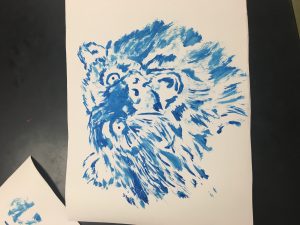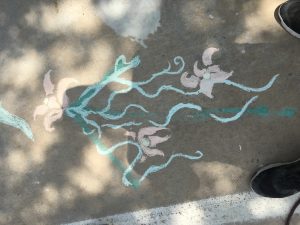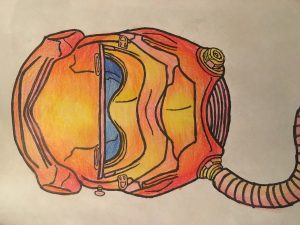I spend a lot of time later in the afternoons either studying, hanging out with friends or some combination of the two while I get most of my serious work done early in the mornings when I’m the most focused and motivated to do hard work. Practice time does tend to take up large portions of my day but I get make up time on the weekends along with Monday and Friday every week.
Author Archives: kmccarth
Blog Post #1
The idea behind article one is that entrepreneurs can learn from artists is that it’s okay to think about things in a strictly non-business-like way. A little outside the box thinking is what makes really great projects come together and breath life in businesses. Artists unique take on life and the human condition are great assets that should be used to their full potential and never be ignored no matter how odd or outrageous the idea.
Article two mainly focuses on the short comings of an artists and how a good foundation and team makes a great business. While creativity is nice if you have no direction it’s all for nothing. Having a team of people behind you that are willing to accept the eccentricity while keeping you on track is the best formula for success.
I scored a 4 on the grit scale so that’s pretty nice. The best thing for me to do in order to increase my grit would be to be more consistent on my short-term projects and goals. I would also like to work on my level of focus, while it’s enough to be considered “gritty” it feels like it’s only skimming the surface of what being gritty really is.
Pink Response
A new way of thinking for a new age is a lofty goal. It’s true that the prominence of creative thinking has skyrocketed in the last century or so but in reality, people have always had to be creative. Necessity is the mother of invention didn’t just appear out of nowhere. People have always had to think on their feet and be on the bleeding edge of technology no matter how primitive technology was at the time. Only now is this way of thinking being glorified. Supply and demand existed long before global economies and the information age, it’s just a matter of perspective.
High tech and high touch is just a prettier way of saying what people have been doing sense the dawn of time. Thinking otherwise is highly ignorant and pitiable. Sure, technology and social climates have changed but the wants and needs haven’t. People have and will continue to want bigger better and cheaper.
If it’s taken the world this long to realize that empathy and general powers of perception are important to all walks of life then something is very wrong. People need to be able to reason just as much as they need to be able thinking critically. Understanding is just as the application, if you can’t apply it practically then clearly your missing something and you need to rethink how you’re going about the task.
Reading this has me extremely frustrated, the author has presented this new high thinking like it’s the greatest thing since sliced bread. People weren’t automatons that could only focus on a single task without any room for growth or change. That’s just not how the world works. People are always growing and changing, adapting to new stimuli and needs. Nothing about that is revolutionary or new it’s all about the practicality, Shakespeare couldn’t have done what he did without the finical backing he got from his sponsor and the only reason he got that backing was because he was really good at what he did and his work as incredibly important.
It’s the same thing with graphic designers and artist today. The work is important and if it want up to quality standards then you flop. Though this argument can be applied to every field of work, blue and white collar. It’s not left or right brain thinking that gets you places it’s how you practically apply all your knowledge and experiences.
Hara Response
What I’m getting from this essay is that Art, or in our case design, is intrinsically linked with history. The phrase “Life imitates Art far more than Art imitates Life” from Oscar Wilde comes to mind. One can’t exist without the other. Art allows us to express ourselves and speak out against injustices in the world and life provides us with motivation and inspiration for art.
Hara touched on a really important subject when it comes to the distribution and availability of art throughout history. Before the invention of the printing press and crude factory machines “art” was produced by hand by master craftsmen that spent their entire life’s perfecting their craft. With the introduction of mass production and industrialization created this massive new school of thought. No longer would it take months of tireless crafting and shaping to produce a new piece of furniture instead a factory could produce hundreds in a month. Scribes would no longer have to spend months transcribing texts for a single recipient instead the printing press could produce a library in half the time.
The availability of information and art skyrocketed within months. With things like the Printing Press Martin Luther’s reformation of the church wouldn’t have been possible. The 95 Theses would have been torn down and forgotten, the bibles German translation would never have been publicized. Religion as we know it and by extension art might be completely different to what we have today. Only can we consider mass produced works to be art? Are the first books produced by the Printing Press comparable to the beauty and penmanship of hand transcribed texts of old? Where is the line in the sand drawn?
People keep pushing for newer and better without appreciating what came before. Through the creation of new mediums, we move farther and farther from our roots. We create fantastic and mindboggling things the human brain can barely comprehend. Ones and zeros come together to for images and texts for us to appreciate and we do but we don’t understand it. You can sit in front of a screen for hours at a time but when asked to explain how it works most people will just stare at you like you asked them to build a rocket from scratch. Granted a rocket is a bit extreme but most people nowadays can’t even draw their own face. We appreciate art but can no longer produce its most simple forms without the assistance of some sort of machine.
As humans we have created a power vacuum in creativity and filled the void with machines. In our quest for new and amazing horizons we’ve ignored the fact that we won’t be able to cross the first ocean we come across. Essentially just because its new doesn’t mean it’s better. Infact as a society we have created a perception that nothing can ever be new. We see the past as a barrier to overcome not a resource to learn from. People always say that if we don’t learn history is doomed to repeat itself if we don’t learn from it but that way of thinking is very limited. We shouldn’t be afraid of our past mistakes instead we should grow and learn from them.
Art is the same way, if we ignore it we gain nothing, if we continually push for the future we fall farther behind. We need to stop and smell the metaphorical roses. We need to stop worrying about what’s right around the corner because we might miss what’s right in front of us. Art is all about the experience and how we let it affect our perception of reality and the world around us.
Flusser Response
You’re a man looking at the world through a keyhole. You’ve spent your whole life trying to widen that keyhole… to see more, to know more. And now, on hearing that it can be widened, in ways you can’t imagine, you reject the possibility. -Ancient One
I was the man looking at the world through a keyhole. I know it sounds cheesy and cliché but after reading this article my eyes have been opened to new way of looking at art and the tools I use. For lack of a better way to put it this article was a mind fuck on the first go around. There were a lot of abstract ideas and terminology being thrown around I really didn’t understand. My camera worked against me? Complexities of color? All a bunch of mumbo jumbo. Then on my fourth go around things started to click into place. Things I thought I had to swing wide for I just had to think about in a particle manner. Of course, I don’t do the same job as my camera, a machine cannot be human, only at its best can it be humanlike. It is a machine that captures an image through processes I can’t even begin to imagine and then saving them in a format I am incapable of viewing without the assistance of another machine. As an artist I hold a “picture” in my mind of what I want and I try to express that trough my photography but the camera doesn’t know what I’m thinking so it captures the image of what it sees.
True art is made by finding a happy medium. By finding a balance between man and machine a composition is formed and from that composition human perception creates art. Human perception is where the line between composition and art becomes blurred. I can spend hours creating the perfect lighting and arrangement of my subjects but at the end of the day it’s what other people perceive to be art that is considered art. Take the Dadaism art movement for example. Someone took an old Urinal signed his name and put it on display as art and people loved it. How we see things is incredibly important, like the article said the color green we see is not the same that we see in a color photo. The things we see go through a number of changes and processes to reach the final digital product. These changes are complex but very important to the artistic process. Through the capture of light and visual information a photograph is born. The article sees this as a deep and world changing process but it’s really not, it’s just a process that needs to be respected because of how it affects your final outcome.










